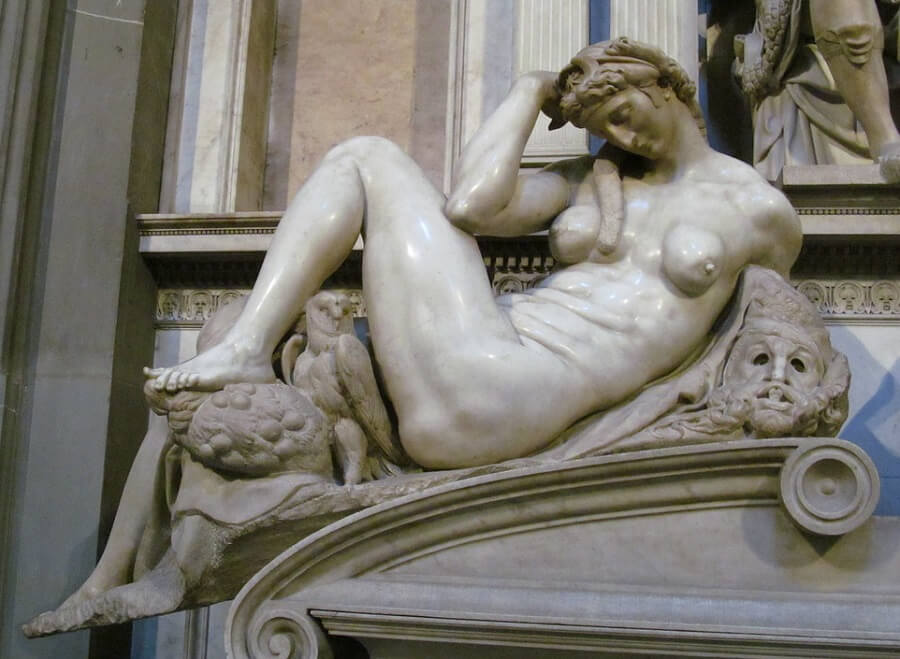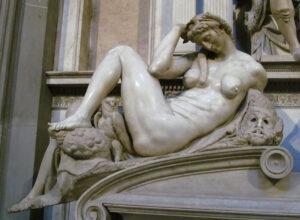
The Vibrant Canvas Was Leighton’s Last

Michelangelo’s Night (1526–31) on the tomb of Guiliano Medici in the Basilica di San Lorenzo in Florence, Italy.
Leighton is known to have admired Michelangelo’s sculpture Night, which appears on the tomb of Giuliano Medici at the church of San Lorenzo in Florence. With the uncommon pose of a nude female shown with a knee prominently curled before her, the sculpture has frequently been cited as a source of inspiration for Flaming June. Indeed, Leighton’s preparatory drawings show the artist reconfiguring the model’s pose through a variety of positions relating to Michelangelo’s sculpture; however, the sculpture’s funerary function also offers insights into Leighton’s painting. During the Victorian era, images of death and sleep were often symbolically and aesthetically intertwined. For all its radiance, Flaming June’s vitality is subtly belied by the presence of oleander growing on the terrace, a poisonous plant often associated with death. Indeed, an existential theme may have had personal significance to Leighton, who was nearing the end of his life, and yet whose brushwork betrays no sign of deterioration. Flaming June would be the last full-scale painting Leighton completed. When he died in January 1896, The Graphic magazine placed the painting in their office window, which was visible as the artist’s funeral procession passed by.


